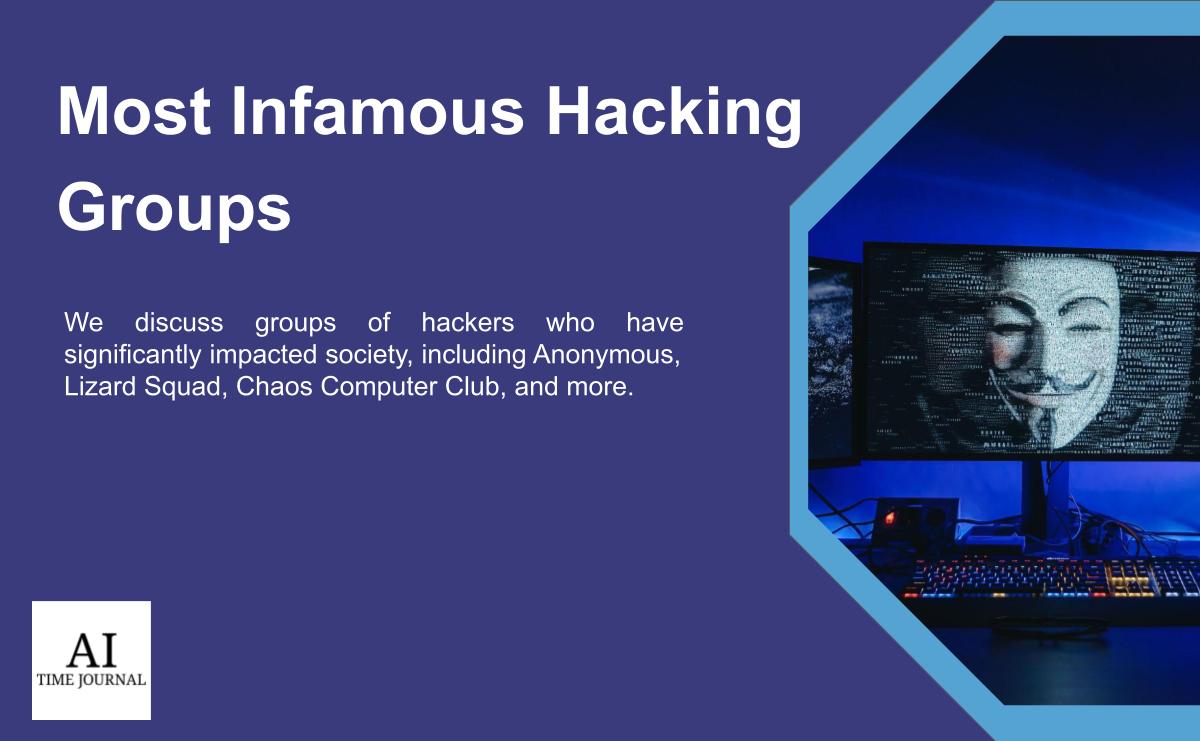
When starting a career, many people’s first impressions come from the media that surrounds them. One of the most highly popular jobs is the hacker; they have become popularized through movies like The Matrix and War Games as well as every crime television show having a dedicated “hacker” on their team.
Hackers have recently become a prevalent career path with jobs ranging all the way up to the government level. However, some use this career for more nefarious or vigilante purposes. Groups of freelance hackers have roamed the internet since its inception with varying degrees of notoriety to their names; this article showcases the five most famous hacking groups. Through these stories, we wish to show how powerful hacking can be in today’s digital world.
If this article interests you and you are interested in other related fields, check this article out.
Anonymous
To start, arguably the most famous group of hackers would be Anonymous, an international group of hackers that regularly deal with governments, corporations, and oddly, the Church of Scientology. The so-called “hacktivist” group started in 2003 using the website 4chan. Anonymous members wear the Guy Fawkes mask from the V For Vendetta franchise which has become their calling card and a way to keep their identity secret.
Their first major job was in 2008 with Operation Chanology, the group launched a bevy of cyber attacks against the Church of Scientology after a video of Tom Cruise posted by Gawker was taken down under threat of cease-and-desist. This led to hotline prank calls, faxing all-black documents to waste ink, and Distributed Denial-of-Service (DDoS) attacks on the religion’s website. This would later escalate with a YouTube video being posted to rally protestors to campaign against the company within the church. Which expedites many people dawning the mask and protesting outside Scientology facilities around the world.
They also stuck together when two members of the group were under the ire of Sony. Sony threatened the members with hefty lawsuits, only for Anonymous to respond with immediate actions. Gaining the group’s attention, Anonymous would turn Playstation servers offline for two days, only for Sony to do it themselves to verify the hack. They would continue to mess with Sony for what would seem like the whole summer. They would then hack PSN again, compromising 27 million users’ data and Sony’s movie department. They revealed many of Sony’s projects in the works and large amounts of financial data.
Their most recent contributions have been to take down Russia during the current Russia-Ukraine war. At the start of the conflict, they took credit for hacking multiple state-owned websites, including the website of the Russian Defense Ministry. They would proceed to hack into the Russian government by leaking tons of emails and gigabytes of data to help other nations figure out if those leaders would help Ukraine or not.
Lizard Squad
From a group with good intentions to a strictly malicious hacking group, Lizard Squad has a bad reputation on the internet as they have been behind some of the most infamous hacks in the entertainment industry, specifically in video games. Thankfully, their reign of terror was only relegated to 2014 & 2015, when key group members were arrested for various counts of computer crimes.
Lizard Squad was instantly public as soon as they started, having been behind the hacking of the popular game League of Legends followed by Playstation services within a few days of each other. They would then hack both Microsoft and Sony’s game servers again at the beginning of December, only to implement a DDoS attack on both on Christmas day. They would commit further illegal actions such as bomb threats against the Sony CEO to leaking explicit photos of celebrities.
Chaos Computer Club
When discussing hackers, one of the earliest possible groups is the Chaos Computer Club which originated in 1981. They are the largest hacking group in Europe with 7,700 registered members and others likely working unregistered. The group has stayed mainly in the European area with its main focus being Germany; it has been this way since its inception.
The group’s first exploit was taking on the Bildschirmtext computer network. The program was an early information server running many different programs including banks. They hacked into this program in order to print out DM 134,000, which was the equivalent of €121,600 in 2017; the money was returned the day after the attack happened. The attack was to prove the system was not safe after the system provider had not revealed certain cybersecurity flaws which were rightfully nixed by the debuting group.
In 2011, they took on the German police and their Staatstrojaner program. Staatstrojaner was a wiretapping campaign; if the German police suspected you of a crime, they would be able to go into the computer and extract that data. This was considered legal as long as they encrypted it after the extraction was completed and only that suspected data was extracted.
The CCC then exposed the deeper processes of this program. The software essentially gave full access to the computer, including the ability to screenshot and install extra codes into the hardware. Also, the effort put into the encryptions that were being used in not only the personal information, but the audio and video files, were so lackadaisical that they were easily busted or lacked any encryptions at all. This event was heavily reported by the German news, leading the government to deny its existence and fully eradicate any trace of it.
Their most recent activity was in 2013 when biometric identification was first introduced to the most recent iPhones and Galaxy phones. The group denounced the use of these processes by merely using every day means to copy fingerprints for the iPhone’s biometric scanner and employ high-resolution pictures of a user’s eye to get into the Galaxy. Since then, the main group in Germany has stayed relatively quiet over the years, but with the length of their run, it would not be surprising if they have gone their separate ways.
The Legion of Doom
Debuting in the U.S. at the same time as the CCC, The Legion of Doom was established by a hacker naming himself after DC Comic’s leader of the LOD: Lex Luthor. They were primarily active from 1984 until the early 2000s and are split among two different factions. Those are the aforementioned Legion of Doom and the Legion of Hackers, and as a combined force they could be considered the most famous hacking group to exist.
The group is also quite well known for its ability to expand the knowledge of hacking as a whole. Through the group’s self-published book: The Legion of Doom Technical Journals, the group has helped expand people’s knowledge of hacking by giving them all the information they would ever need when dealing with a relatively new field.
The largest claim to fame for the group was their war with another hacking group that will be mentioned later. The war began in the 1990s and was a destructive affair for both sides that would effectively wipe out the groups. Throughout the conflict, the LOD would take most of the blame for the attacks. This would lead to the raiding, arresting, and prosecution of many of the group’s members for their actions during this cyber war. The conflict led to a complete and utter shutdown of AT&T and the closure of both teams, but how did it start?
Masters of Deception
The last group is on the other side of this war; the Masters of Deception. The group was created almost as a mockery of the pre-established LOD, even in the naming convention. Through their actions, both groups tried to mock each other and would later be wiped from the digital space. Even though the two had a rivalry, several individuals within the groups were friends and would stand down once the initial police raids happened.
Cyberwar is their main claim to fame, much like the LOD, but unlike them, they did not have the complete ire of the police on them. In 1990, half of all long-distance calls through AT&T were unavailable for 9 hours. This was the result of a feud between the LOD and the MOD where a member of the MOD had antagonized the LOD, causing a major takedown of phones and computers throughout the U.S.
The conflict started after a hurtful insult was thrown toward a member of the LOD, which led the LOD to retaliate by targeting a specific member of their opponents, hacking into their phone, and calling at all hours of the day. This harassment eventually got the FBI involved because the targeted member contacted them. The FBI was already privy to the situation, however, as they had already been searching for the MOD and with the LOD mentioned as the other side of this cyber war. The members of both sides were either taken into custody, became white hat hackers, or vanished from the face of the Earth.
For more information on courses to stop hackings like these, check out this article.
